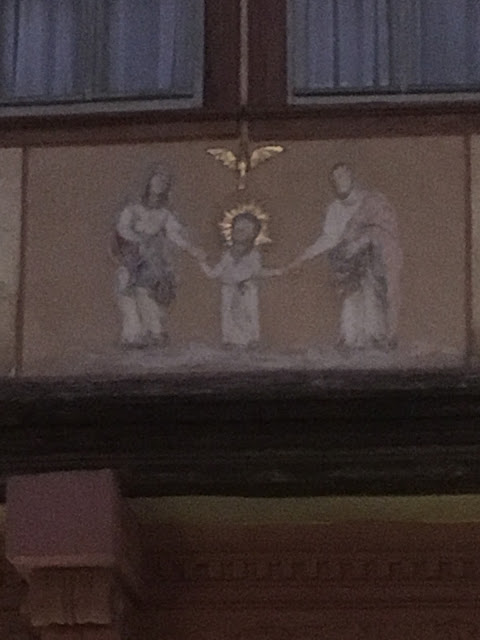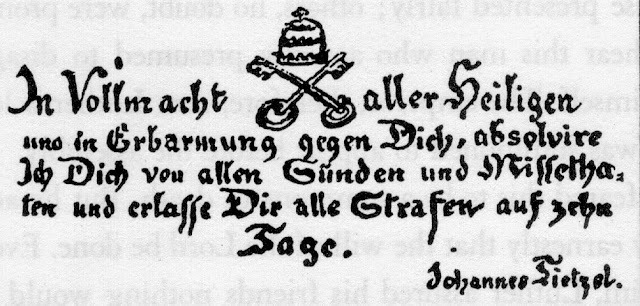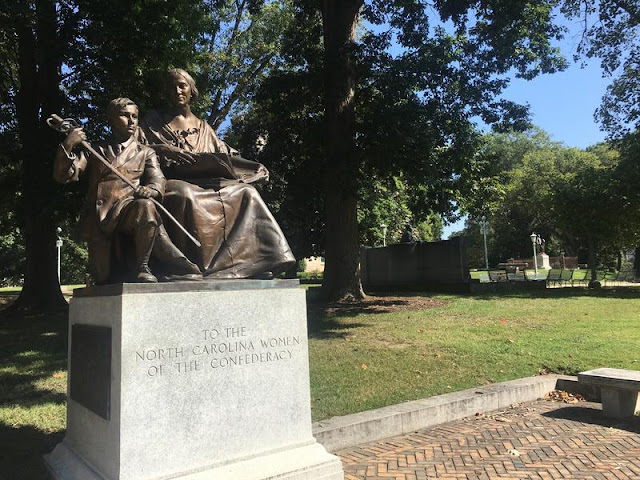HERE I STAND! - Martin Luther & The Diet of Worms (Reformation Blog #10)
Worms!? What in the world is the Diet of Worms? That sounds gross. Right? You may ask yourself, “Did someone force Luther to eat worms for nailing his 95 theses to that church door in Wittenberg?” Good question but I have good news! No. This is not what the Diet of Worms means and in the German language, Worms is pronounced in a way that sounds more like, “Vaurms”. “Worms” is a city and “Diet” comes from the Latin to mean “days”.
During Luther’s time, there was no Germany yet. There was the Imperial Roman Empire of the German Nation and Luther lived in an area like a small state that was called Saxony. All of the leaders over the different regions in the Imperial Roman Empire of the German Nations would set a date to meet and discuss pressing issues. Back then, it would be very complicated to handle everything by mail and the telephone had not yet been invented. So, a day was set aside for everyone to meet face to face. There was a starting date but these diets could go on for days, weeks or months. It depended on how many issues there were to address and how long each of them might take. In Luther’s case, he was only in Worms for ten days of the Diet of April, 1521.
Luther’s 95 theses and several books he had written and published for the public had become a problem within the Holy Roman Church. Luther had made a shortened version of his theses in the German language and then had them printed by a Gutenberg press; a new invention which made it possible to produce over 300 copies of print in the amount of time that it otherwise took for 1 copy to be reproduced by hand. Luther was writing books on his theological perspective and many of them were derogatory towards the pope and the Roman Catholic Church. Also, he had written a special book that was intended for nobility to read. This book was called, “To the Christian Nobility of the German Nation” and it was having some influence. He gradually won over several of the princes who were responsible for governance.
One of the main things that Luther challenged was the system of indulgence which helped to pay for the beautiful ornate cathedrals I have been privileged to visit during this trip. But, the indulgences also paid to help operate the churches, keep the clergy well paid and increase the power of the emperor and other governmental officials. Unfortunately, to get people to pay indulgences, they had been led to believe that the sins of everyone were so many that they would need to be purified in a place called “Purgatory” before they were able to enter Heaven. The Germans here have explained that in Purgatory, you would “sizzle like a sausage” until you were pure enough to go to Heaven.
There were ways to shorten your period in Purgatory. You could do good deeds. You could touch or gaze upon a holy relic. A holy relic was associated with someone who was considered to be a holy person or something. For example, a bit of hay that was said to have come from the manger where Jesus was laid may be considered a relic. A lock of hair or a piece of clothing that had belonged to one of the apostles might be considered a relic, etc… In the historical exhibit that was located inside of Coburg Castle yesterday, there were many relics because Luther’s Prince, Frederick the Wise, bought an unbelievable number of them so that his people could come to view them and have their time in Purgatory reduced. We were able to view the finger of a saint, yesterday. It was encased in ornate metals and jewels. We also saw a drinking glass that was said to have contained water that turned to wine while the original owner had drunk from it. This particular glass had been passed down through generations and had already survived 500 years during the time of Luther. It was passed to him after Frederick’s collection was broken up. Now it is 1,000 years old and it is still unbroken.
If a person could not touch a relic, they could gaze upon it and earn maybe half as much of a shortened period in Purgatory as someone who could touch it. Another way to shorten a person or deceased loved one’s time in Purgatory was to buy an indulgence paper. In the case of indulgence papers, a person would pay a certain amount of money in exchange for a specified number of days to be released early from purgatory. You could buy an indulgence paper for yourself. Or, you could buy it for someone else living or deceased.
The sale of indulgences was one of the main things that upset Luther greatly because he could find no justification for it in the scriptures and found it to be anti-biblical. So, this is one of the main things he argued against. He felt that this system was creating a situation where the Church functioned in the opposite way than how the scriptures indicated that it should. It was not caring for the poor but taking from them in order to create elaborate buildings and allow priests and popes and government leaders to enjoy a life of luxury. Perhaps what is worse is that they were leading generations of Christians to believe that all of these things were expected of them by the holy scriptures. Luther was not the first or only person to have this opinion. He was just the first since Jan Hus (John Huss) to really give voice to it. The printing press had made this possible.
After over a year of discussions and negotiations and public written debate between Luther and Pope Leo X, Luther was sent a papal bull (official paperwork) excommunicating him from the church in January of 1521. In the same document, Pope Leo called for the emperor to respond energetically against this heresy. At this point, it is important to understand that in those days, the church had more authority than the emperor because the pope crowned the emperor. So, when the pope made a statement about what the emperor should do, the emperor was expected to comply.
The newly crowned emperor at that time was Charles V. He was only 21 years old and the Diet in Worms was to be his first Diet. Charles V had received his title with such little experience and at such a young age by borrowing money to pay for it. Several of the princes were in support of Luther and Luther’s prince, Frederick the Wise, elector of Saxony, did not want Luther to be disciplined by the emperor without first receiving a hearing. So, Charles V agreed to hear from Luther at the next scheduled diet (meeting) that was to be held in Worms. However, it is important to realize that because Charles came into power by buying the position, he now owed a lot of money and was dependant on receiving much of his income from the princes who served within his realm. In essence, he needed to remain in their good graces and to keep getting their money.
Martin Luther, of course, went to Worms expecting to defend, debate, discuss and write down his ideas. But, that was not what the emperor wanted. For the emperor and some of the princes, all they really wanted to do was show a sign of goodwill before the people by agreeing to meet with Luther. The intention was to give him the opportunity to recant. Luther could not recant and asked for another day to consider the situation. So, Luther realized that Charles V had already made his decision.
Luther returned the next day firm in his decision, explaining,
“Unless I am convinced by Scripture and plain reason - I do not accept the authority of the popes and councils, for they have contradicted each other - my conscience is captive to the Word of God. I cannot and I will not recant anything for to go against conscience is neither right nor safe. God help me. Amen."
There are some versions of the story which state that Luther also said, "Here I stand. I cannot do otherwise."
Whether he said those words or not, he certainly meant them.
At this point, Luther was dismissed and the young emperor was responsible to write up an Imperial Act declaring Luther to be an outlaw. This meant that if someone saw him, they were responsible to turn him in and could kill him without punishment. Luther was given about three weeks to find a safe location before the Imperial Act was enforced.
So, that is the story of how Luther became so popular and how it led to his demise at The Diet of Worms. This is part of what I have been learning more about these last two days as I have visited Erfurt, Coburg Castle, several Roman Catholic Cathedrals, the Dome of Worms, the city of Worms, Mainz, and the Gutenberg Press Museum! Here are some pictures from today.
 |
| Cemetery below the Dome of Worms Cathedral |
 |
| Seen on a home in Mainz |
 |
| Three women holding books. Maybe Bibles? Seen inside the Dome of Worms. |
 |
| Bishop Buchard. First Bishop of Worms. He came to spread the message of Christianity in the year 1018. |
 |
| He we stand! Rain and all! |
 |
| There is so much to learn from all the carvings at this entryway that a pamphlet is needed just for this arch. This is the main door into the Dome of Worms. |
 |
| A Gutenberg Bible with notes from Martin Luther on the left. |





















